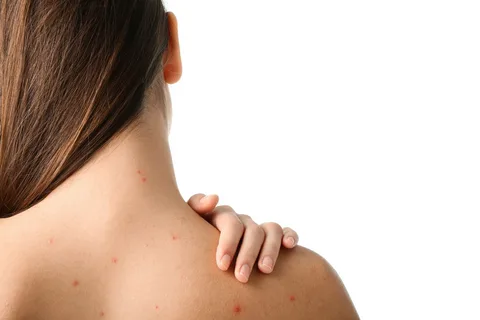Introduction
Acne is a skin condition that affects a lot of people worldwide, and it’s not limited to just the face. Many individuals also struggle with acne on their back, commonly referred to as “bacne.” While back acne may not be as visible as facial acne, it can still be a source of discomfort and self-consciousness. In this article, we’ll delve into what back acne is, its causes, and effective solutions to help you manage and prevent it.
Understanding Bacne
Back acne, or bacne, is a skin condition characterized by blackheads, whiteheads, pimples, and sometimes cysts or nodules on the back. It shares many similarities with facial acne, including its causes and treatment options.
Causes of Bacne

Several factors contribute to the development of back acne:
- Excess Sebum Production: Just like facial acne, bacne often starts with an overproduction of sebum (skin oil) by the sebaceous glands. The excess oil can clog hair follicles and lead to the formation of pimples and other acne lesions.
- Dead Skin Cells: The skin on your back sheds dead skin cells, which can mix with sebum and block pores. When these pores become clogged, it can result in acne breakouts.
- Bacteria: Propionibacterium acnes (P. acnes) is a type of bacteria that naturally resides on the skin. When hair follicles become clogged, it creates an ideal environment for these bacteria to thrive, leading to inflammation and acne.
- Hormonal Fluctuations: Hormonal changes that occur during puberty, menstruation, pregnancy, or stress can trigger an increase in sebum production and exacerbate acne.
- Friction and Pressure: Wearing tight clothing or carrying heavy backpacks can cause friction and pressure on the back, leading to irritation and the development of acne in those areas.
- Diet: Although the link between diet and acne is still being studied, some individuals may find that certain foods, such as dairy products or high-glycemic foods, can worsen their bacne.
- Medications: Some medications, like corticosteroids or hormonal treatments, can trigger or worsen acne as a side effect.
Solutions for Managing Bacne
The good news is that there are several effective strategies to manage and prevent back acne. Here are some practical solutions:
Maintain Good Hygiene:
- Shower regularly, especially after sweating or exercising.
- Use a gentle, pH-balanced cleanser to wash your back. Avoid harsh scrubs, as they can irritate or damage the skin and worsen acne.
Exfoliation:
- Exfoliating your back twice a week can help remove dead skin cells and prevent pore blockages.
- Choose a chemical exfoliant with salicylic acid or glycolic acid, which can penetrate the pores and break down and remove the buildup of oil and dead skin cells.
Choose the Right Products:
- Use non-comedogenic (non-pore-clogging) skincare products, including sunscreen, moisturizers, and body lotions.
- Look for products labeled “oil-free” or “acne-prone skin” to avoid aggravating bacne.
Loose Clothing:
- Wear loose-fitting, breathable clothing, especially if you’re prone to back acne.
- Avoid tight straps or bras that can cause friction and irritation.
Avoid Heavy Backpacks:
- If you carry a backpack regularly, consider using a backpack with padded straps or alternate between shoulders to reduce pressure and friction.
Topical Treatments:
- Over-the-counter topical creams containing benzoyl peroxide or salicylic acid can be applied to affected areas.
- Consult a dermatologist for stronger prescription treatments, such as topical retinoids or antibiotics, if over-the-counter products are ineffective.
Hormonal Management:
- For individuals with hormonally driven acne, hormonal birth control methods may help regulate hormone levels and improve acne.
- Consult a healthcare provider for personalized guidance on hormonal management.
Dietary Adjustments:
- While the relationship between diet and acne is complicated and varies from person to person, some individuals may benefit from reducing their intake of dairy and high-glycemic foods.
- Balanced your diet with vegetables, fruits, whole grains, and lean proteins.
Stress Management:
- Stress can exacerbate acne, so practice stress-reduction techniques such as meditation or deep breathing exercises.
Professional Treatments:
- In severe cases, or if bacne is causing significant distress, consult a dermatologist for professional treatments like chemical peels, laser therapy, or corticosteroid injections.
Conclusion
Back acne, or bacne, can be a tough skin condition to manage, but with the right approach, it’s possible to achieve clearer and healthier skin. Remember that consistency is key when addressing acne. Implementing good hygiene practices, choosing suitable skincare products, and considering lifestyle factors like diet and stress can all contribute to better skin health. If you’re struggling with persistent bacne, don’t hesitate to consult an experienced dermatologist who can provide personalized and best treatment options to help you achieve the clear skin you desire. By taking proactive steps and seeking professional guidance when needed, you can effectively manage and prevent back acne, boosting your confidence and overall well-being.